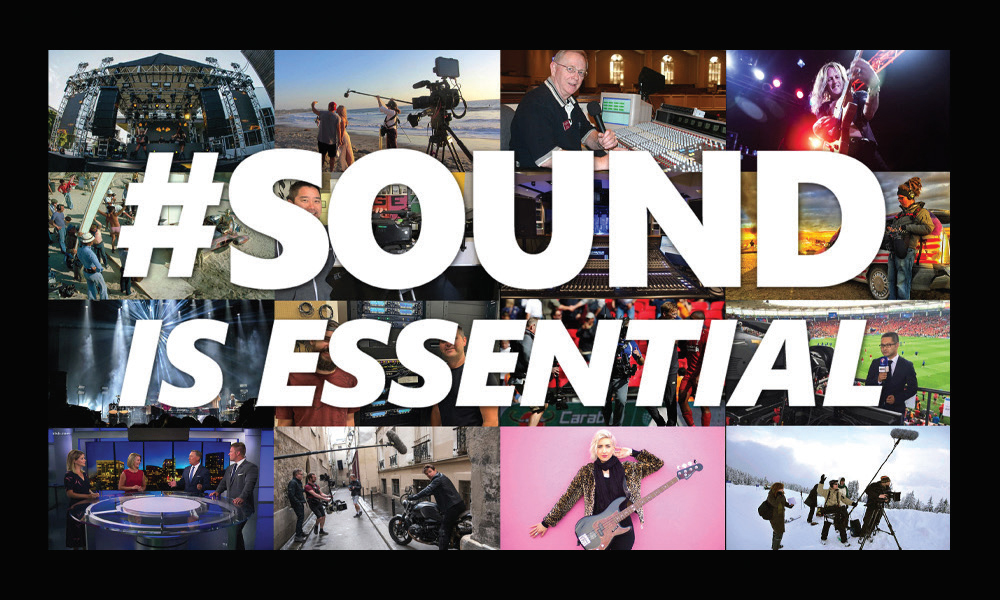I wouldn’t expect much of an argument from anyone reading this article if I were to state that sound is as least as important as the visuals for any modern media. But I’ll take it even further – sound has always been essential for any media, ever.
For human beings, sound is communication. Yes, we have the written word, and we have still and moving images, all of which are, of course, critical to communicating in modern life. But the spoken word and song are much older and far more central to who we are as people. Many cultures around the world are still based on oral histories. Up until a few thousand years ago, it was all we had.
If you haven’t seen videos of Alzheimer’s disease patients who can’t remember their own family members or what happened 30 seconds ago but can remember the words to their favorite songs from 50 years ago, be sure to check them out. It’s moving to watch these people come alive and sing along with the Everly Brothers, Fats Domino, the Four Tops, Sarah Vaughn, and so on.
A Long Time Ago
Imagine yourself in an ancient Greek city, watching a play. You’re a bit annoyed – not because you can’t understand ancient Greek, but because you can’t hear what the actors are saying. Except that the Greeks already had this figured out! The actors wore masks that helped their voices project.
Meanwhile, you are in an amphitheater! The definition of the word comes from the Greek terms amphi for “around” and théātron “a place for viewing” – and of course the physical design of these venues helped make it possible for everyone in the audience to hear what was going on.
Otherwise, what was the point? There were no LED screens, lasers, follow spots and pyro back in those days. (Well, maybe they had pyro…)
Modern Problems
Who among us hasn’t experienced some frustration when the powers that be on a production or event insist that visuals take precedence when it means that sound quality ultimately suffers?
I came across plenty of these gigs when I worked for the United States Air Force Band. A colonel or general – otherwise known as “the brass” – would explain what the gig was about: “We’re re-creating a 1940s cabaret environment, so we need a vintage-looking microphone – and I don’t want to see any speakers!”
I blame movies for this problem to some extent. How many times have we watched scenes where there’s an attractive singer hugging a vintage mic, accompanied by a live band on stage that’s equipped with no mics, no loudspeakers – no nothing in terms of sound reinforcement. Yet what we hear is invariably studio-grade sound.
So, when we try to explain to the bosses that “no loudspeakers visible likely means substandard audio coverage for the audience,” invariably, the reply is along the lines of “you’ll figure it out – you can work miracles, right?” And yes, we can, and we will, and we do (at least where it’s “good enough”), which ends up perpetuating the problem.
Speaking of movies – when has there ever been a scene when someone walks up to talk into a live mic and there wasn’t feedback? I’ve never seen it.
But in the hundreds of live shows I handled during my career as a front of house engineer (and mixed monitors from the main console), I can only recall perhaps a handful of times when there was ever any feedback. That’s why we do things such as choose the right mics and place them wisely, ring out the stage monitors, carefully plan out main loudspeaker coverage, and dial in gain before feedback – all of this (and often more) before a note is struck. We’re professionals, after all!
Holding For Room Tone
In the film production business, the term “room tone” is somewhat of a running joke along with many related memes on social media. There are even scenes in television shows such as Family Guy (season 15, episode 8) and The Simpsons (season 28, episode 10) that originally aired within a week of each other back in 2016, referring to this inside joke.
What’s the joke? That it’s a pain in the tail for everyone to have to “wait on sound” while the background ambience of a given space is recorded so that the post-production team can use it while mixing the picture, thus avoiding having to try to re-create it later.
It can’t be lost on anyone that without clear dialog recording, films are a mess. There’s even been a recent spat between director Christopher Nolan and the rest of the world about how dialog can’t always be heard in his movies due to the prevalence of sound effects and/or overbearing musical score.
I get where he’s coming from, but I think he’s on the wrong side of this particular argument. If you’re like me, you want to hear the words so you know what’s going on in the minds of the characters and what’s going on between them – that’s “the story” after all – without having to go through the hassle of turning the volume up and down on the home theater system. This can also lead to breaking something – as a matter of fact, I once flamed-out a subwoofer trying to watch (and hear) the film Interstellar. The sub was fine after a re-cone kit, but still…
#SoundIsEssential
All of this leads me to the idea of collectively telling the world that sound is essential, and nothing would be the same without it, or at least without it done right. This past December, a social media campaign was launched with a couple of dozen parties involved – including manufacturers like Lectrosonics, DPA, Calrec, Halter Technical, and Schoeps Mikrofone, pro audio dealers such as Dale Pro, Raycom UK, Talamas Broadcast, Gotham Sound, Trew Audio, and Location Sound Corp., and well-known practitioners in our business that include Samantha Potter and Steve Milner, to name just a few.
While we’re in the early days of this campaign, it’s interesting to observe the effects. Since we aren’t doing live shows for the most part due to the pandemic’s shutdown of our industry, we’ve chosen to spread the word via short videos.
Each of the videos demonstrates, in some creative way, how critical sound is for the medium. Some have no sound at all, some have bad sound and/or out-of-sync sound. And the responses to them are universal! Nearly everyone who sees them has a visceral reaction: “Something is wrong – why can’t I hear anything?” (Why, indeed?!)
The good news is that if you’d like to participate, it’s not too late. We all want the campaign to go on for a good long while to help spread awareness of the importance of sound in every media. For detailed info, go to lectrosonics.com and click on “Sound Is Essential,” where you’ll find an example video and be able to grab the assets for making your own.
Thanks for “listening” and let’s keep working together to promote the importance of sound, making good sound, and continuing to consistently make good sound.















